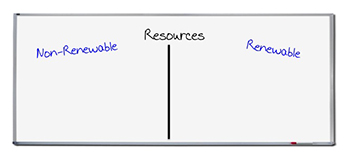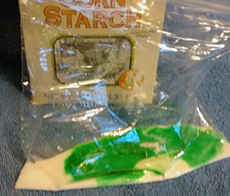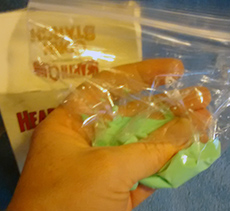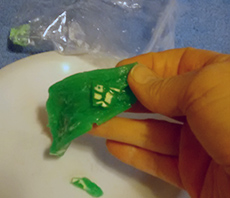Corn an A-maizing Plant: Food, Fuel, and Plastic
Students examine the growth, composition, history, and uses of corn through a close reading activity, discussion of renewable and non-renewable resources, and hands-on exploration of bioplastics made from corn.

Background
Lesson Activities
Recommended Companion Resources
Credits
Author
Lynn Wallin, Lyndi Perry, Debra Spielmaker, Jessica Budge | Oregon, Utah, and Illinois Agriculture in the Classroom
Acknowledgements
The bioplastic or corn plastic activity has been part of numerous presentations and published informally by several Agriculture in the Classroom programs and agricultural science programs. The original source for the bioplastic mixture is unknown.
Sources
- https://www.bpiworld.org/resources/documents/washington%20state%20biobased%20fact%20sheet%20aug%2014.pdf
- http://www.usda.gov/nass/PUBS/TODAYRPT/cropan16.pdf
- https://www.agintheclassroom.org/media/cdqd0zrk/corn-agmag-interactive.pdf
Standards
Indiana Content Area Standards
-
Social Studies. Grade 3: Geography: Standard 3
Students explain that simple grid systems (latitude and longitude) are used to locate places on maps and globes, begin to understand the Earth/sun relationship, identify the distinctive physical and cultural features of their community, explain the geographic relationships between their own community and the state and other states within the region, and compare the geographic characteristics of their own community with communities in other parts of the world/country.
- 3.3.10 Human Systems: Construct maps and graphs that show aspects of human/environmental interaction in the local community, Indiana and communities within the region.
- 3.3.8 Physical Systems: Identify the major climate regions of the United States and explain their characteristics.
- 3.3.9 Physical Systems: Describe how climate and the physical characteristics of a region affect the vegetation and animal life living there.
-
Social Studies. Grade 4: Geography: Standard 3
Students explain how the Earth/sun relationship influences the climate of Indiana; identify the components of Earths physical systems; describe the major physical and cultural characteristics of Indiana; give examples of how people have adapted to and modified their environment, past and present; identify regions of Indiana, and compare the geographic characteristics of Indiana with states and regions in other parts of the world/country.
- 4.3.4 Places and Regions: Map and describe the physical regions of Indiana and identify major natural resources and agricultural/crop regions.
-
Social Studies.Grade 5: Geography: Standard 3
Students describe the influence of the Earth/sun relationship on climate and use global grid systems; identify regions; describe physical and cultural characteristics; and locate states, capitals and major physical features of the United States. They also explain the changing interaction of people with their environment in regions of the United States and show how the United States is related geographically to the rest of the world.
- 5.3.3 Places and Regions: Use maps and globes to locate states, capitals, major cities, major rivers, the Great Lakes, and mountain ranges in the United States.
- 5.3.9 Human Systems: Identify the major manufacturing and agricultural regions in colonial America and summarize the ways that agriculture and manufacturing changed between 1600 and 1800.
-
English Language Arts.Grade 3.RN.1
Read and comprehend a variety of nonfiction within a range of complexity appropriate for grades 2-3. By the end of grade 3, students interact with texts proficiently and independently.
- Key Ideas and Textual Support.3.RN.2.1: Ask and answer questions to demonstrate understanding of a text, referring explicitly to the text as the basis for the answers.
-
English Language Arts.Grade 3.RV.1
Build and use accurately conversational, general academic, and content-specific words and phrases.
- Vocabulary in Literature and Nonfiction Texts.3.RV.3.2: Determine the meanings of general academic and content-specific words and phrases in a nonfiction text relevant to a third grade topic or subject area.
-
English Language Arts.Grade 3.SL.1
Listen actively and adjust the use of spoken language (e.g., conventions, style, vocabulary) to communicate effectively with a variety of audiences and for different purposes.
- Comprehension.3.SL.3.2: Ask and answer questions about information from a speaker, offering appropriate elaboration and detail.
- Discussion and Collaboration.3.SL.2.1: Engage effectively in a range of collaborative discussions (one-on-one, in groups, and teacher-led) on grade- appropriate topics and texts, building on others ideas and expressing personal ideas clearly.
- Discussion and Collaboration.3.SL.2.4: Ask questions to check understanding of information presented, stay on topic, and link comments to the remarks of others.
-
English Language Arts.Grade 4.RV.1
Build and use accurately general academic and content-specific words and phrases.
- Vocabulary in Literature and Nonfiction Texts.4.RV.3.2: Determine the meanings of general academic and content-specific words and phrases in a nonfiction text relevant to a fourth grade topic or subject area.
-
English Language Arts.Grade 4.SL.1
Listen actively and adjust the use of spoken language (e.g., conventions, style, vocabulary) to communicate effectively with a variety of audiences and for different purposes.
- Discussion and Collaboration.4.SL.2.1: Engage effectively in a range of collaborative discussions (one-on-one, in groups, and teacher-led) on grade- appropriate topics and texts, building on others ideas and expressing personal ideas clearly.
- Discussion and Collaboration.4.SL.2.2: Explore ideas under discussion by drawing on readings and other information.
- Discussion and Collaboration.4.SL.2.4: Pose and respond to specific questions to clarify or follow up on information, and make comments that contribute to the discussion and link to the remarks of others.
-
English Language Arts.Grade 5.RV.1
Build and use accurately general academic and content-specific words and phrases.
- Vocabulary in Literature and Nonfiction Texts.5.RV.3.2: Determine the meaning of general academic and content-specific words and phrases in a nonfiction text relevant to a fifth grade topic or text.
-
English Language Arts.Grade 5.SL.1
Listen actively and adjust the use of spoken language (e.g., conventions, style, vocabulary) to communicate effectively with a variety of audiences and for different purposes.
- Discussion and Collaboration.5.SL.2.1: Engage effectively in a range of collaborative discussions (one-on-one, in groups, and teacher-led) on grade- appropriate topics and texts, building on others ideas and expressing personal ideas clearly.
- Discussion and Collaboration.5.SL.2.2: Reflect on and contribute to ideas under discussion by drawing on readings and other resources.




